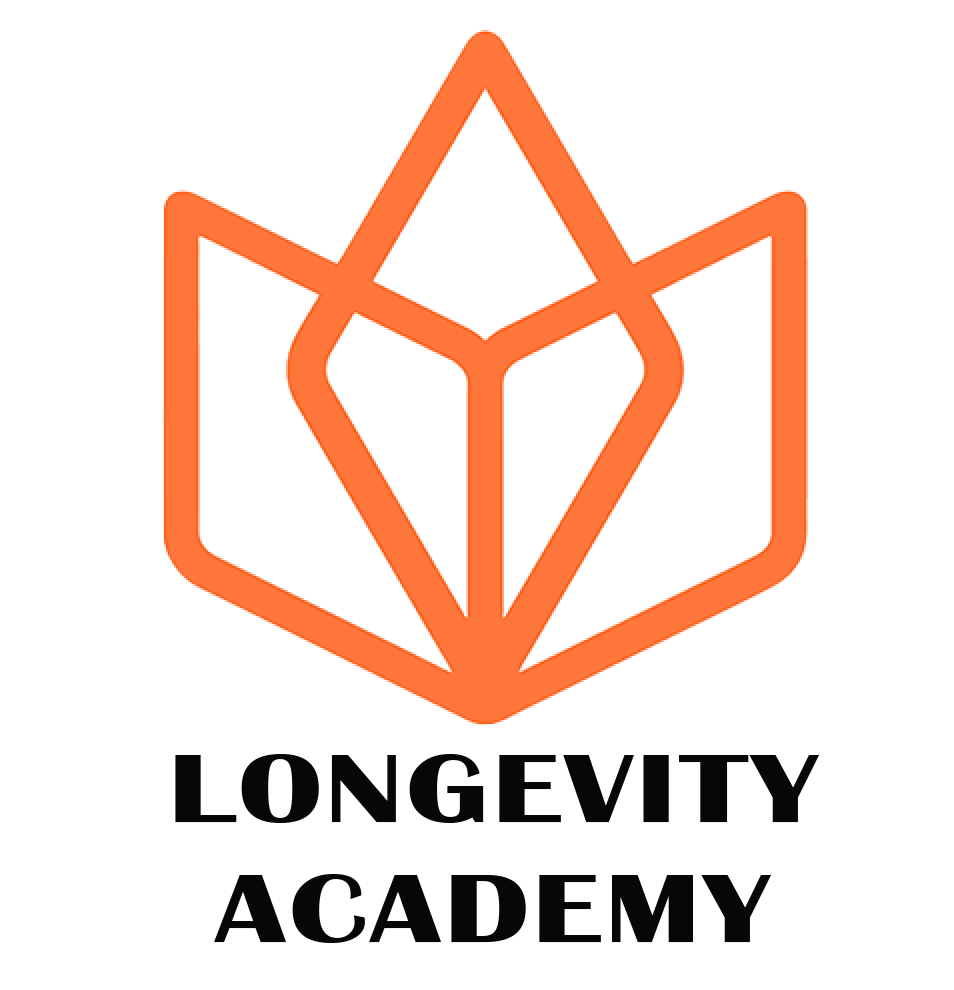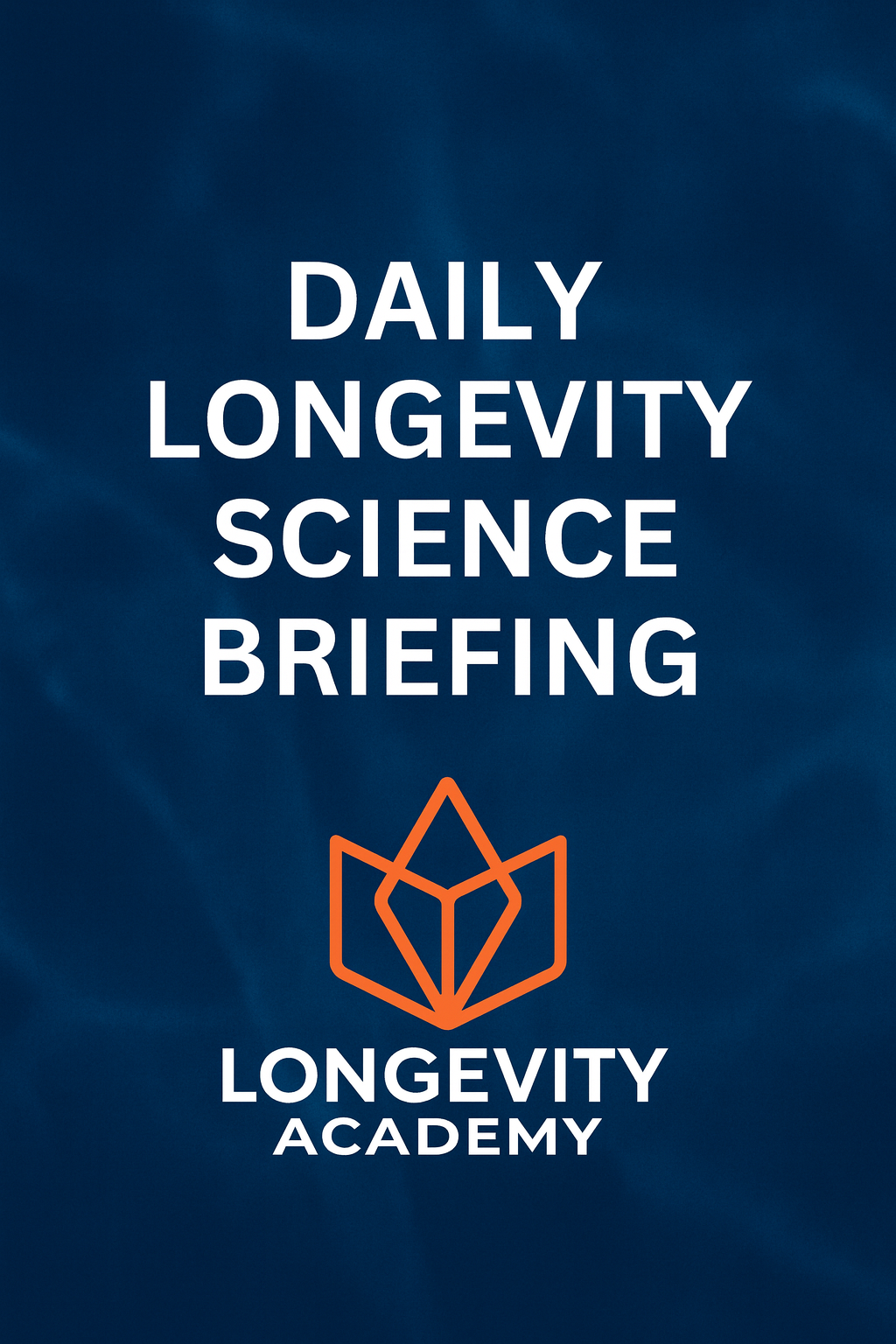October 04, 2025 (America/Los_Angeles)
Brought to you by the Longevity Academy
Executive Summary
The most significant signal in the last 24 hours is the publication of a human randomized controlled trial in Cell Reports Medicine demonstrating that the diabetes drug henagliflozin can extend telomere length and improve multiple aging biomarkers. This provides the first direct clinical evidence for the anti-aging potential of SGLT2 inhibitors, a class of drugs that mimic caloric restriction. Another key development comes from Nature Aging, which reports on a novel blood DNA methylation test capable of assessing the biological age of 11 different organ systems, offering a major step towards personalized aging interventions. These findings highlight a clear trend towards clinically actionable and precise biomarkers of aging.
What to Watch Next (7-30 Days)
•Full publication of the “Systems Age” paper: The Nature Aging research briefing is a summary of a more detailed technical report. The full paper will provide deeper insights into the methodology and validation of the multi-organ epigenetic clock.
•Replication of henagliflozin findings: The positive results from the henagliflozin trial will likely spur further research. Watch for announcements of new, larger, and longer-term trials in diverse populations.
•Preprint peer review: The bioRxiv preprint on long-read epigenetic clocks for brain aging presents a novel methodology. Its transition to a peer-reviewed publication will be a key milestone for its validation.
Ranked Top 5 Table
|
Rank
|
Title
|
Source
|
Published (PT)
|
Evidence Level
|
Domain Tag
|
Overall Score
|
Link
|
|
1
|
Effect of henagliflozin on aging biomarkers in patients with type 2 diabetes
|
Cell Reports Medicine
|
Sep 16, 2025
|
Human RCT
|
Pharmacological
|
4.85
|
|
|
2
|
A blood DNA methylation test reveals how quickly each organ system is aging
|
Nature Aging
|
Sep 15, 2025
|
Human obs
|
Biomarkers
|
4.10
|
|
|
3
|
Vascular Endothelial NAMPT-Mediated NAD+ Biosynthesis Regulates Angiogenesis and Cardiometabolic Functions
|
Aging Cell
|
Sep 29, 2025
|
Animal
|
NAD+ Metabolism
|
4.10
|
|
|
4
|
Phase separation meets energy generation to boost longevity
|
Nature Aging
|
Oct 03, 2025
|
Animal
|
Mitochondria
|
3.90
|
|
|
5
|
Long-Read epigenetic clocks identify improved brain aging biomarkers
|
bioRxiv
|
Oct 04, 2025
|
Tool/Data
|
Epigenetic Clocks
|
3.40
|
_
One-Pager Summaries
#1. Effect of henagliflozin on aging biomarkers in patients with type 2 diabetes
What happened:
A multicenter, randomized, double-blind, placebo-controlled trial involving 142 patients with type 2 diabetes found that a 26-week treatment with the SGLT2 inhibitor henagliflozin significantly increased telomere length, a key biomarker of aging. The study also observed improvements in other aging-related markers, including the IGF-1 system, immune function, and metabolism.
Why it matters (impact):
This study provides the first direct clinical evidence that a drug from the SGLT2 inhibitor class, already approved for treating diabetes, can have anti-aging effects in humans. This opens the door for repurposing these drugs for longevity interventions and provides a tangible clinical milestone in the geroscience field.
Evidence level:
Human RCT
Study details:
•Species: Human
•n: 142 (69 henagliflozin, 73 placebo)
•Effect size: Mean difference in telomere length change of 0.06 (95% CI 0.02-0.11, p=0.011)
•Endpoints/biomarkers: Telomere length, IGF-1 system markers, immune cell function (granzyme B in CTLs), metabolomics (β-hydroxybutyrate, thiamine)
Limitations/caveats:
The study was conducted on patients with type 2 diabetes, so the findings may not be generalizable to healthy individuals. The 26-week duration provides insights into medium-term effects, but longer-term studies are needed. The study population was primarily Chinese.
Next milestone:
Longer-term and larger clinical trials in more diverse populations are needed to confirm these findings and assess the long-term safety and efficacy of henagliflozin as a geroprotective agent. Regulatory discussions for an aging-related indication could follow if results remain positive.
Primary link(s):
Conflicts/paywall:
Open Access
#2. A blood DNA methylation test reveals how quickly each organ system is aging
What happened:
Researchers have developed a single blood-based DNA methylation test, called “Systems Age,” that can estimate the biological age of 11 different physiological systems. This new epigenetic clock was validated in large cohorts and shown to predict mortality and health outcomes more accurately than existing clocks.
Why it matters (impact):
This represents a significant advancement in the field of aging biomarkers. By providing a detailed, multi-system view of the aging process from a single blood sample, it enables a more personalized approach to longevity medicine. It can help identify which systems are aging fastest and guide targeted interventions.
Evidence level:
Human obs
Study details:
•Species: Human
•n: Validated in multiple large cohorts (Framingham Heart Study, Women’s Health Initiative, ADNI)
•Effect size: NR
•Endpoints/biomarkers: DNA methylation-based age estimates for 11 physiological systems
Limitations/caveats:
The full technical details of the methodology are behind a paywall, with the current publication being a research briefing. Broader validation in more diverse populations is still needed.
Next milestone:
The full publication of the technical report will be a key step. Following that, the test will need to undergo regulatory review for clinical use.
Primary link(s):
Conflicts/paywall:
Paywall
#3. Vascular Endothelial NAMPT-Mediated NAD+ Biosynthesis Regulates Angiogenesis and Cardiometabolic Functions
What happened:
This study, published in Aging Cell, used knockout and aged mice to demonstrate that a deficiency of NAD+ in vascular endothelial cells is a key driver of age-related failure in angiogenesis (the formation of new blood vessels). The researchers identified the specific molecular pathway involved (NAMPT–NAD+–SIRT1–eNOS) and showed that restoring NAD+ levels with nicotinamide mononucleotide (NMN) could reverse the decline.
Why it matters (impact):
This research provides a clear mechanistic link between NAD+ decline and vascular aging. By identifying the NAMPT–NAD+–SIRT1–eNOS axis as a critical pathway, it offers a specific therapeutic target for treating age-related cardiovascular and metabolic diseases.
Evidence level:
Animal
Study details:
•Species: Mouse
•n: NR
•Effect size: NR
•Endpoints/biomarkers: Angiogenesis, subcutaneous adipogenesis, cardiometabolic function, eNOS phosphorylation
Limitations/caveats:
The study was conducted in male mice, so the findings may not apply to females. As an animal study, the results need to be validated in humans.
Next milestone:
Human clinical trials are the clear next step to determine if boosting NAD+ levels can improve vascular function and treat cardiometabolic diseases in aging humans.
Primary link(s):
Conflicts/paywall:
Open Access
#4. Phase separation meets energy generation to boost longevity
What happened:
Published in Nature Aging, this study describes a novel mechanism for maintaining mitochondrial function during aging. Researchers found that specialized hubs called mitochondria-associated translation organelles (MATOs) form through liquid-liquid phase separation on the mitochondrial surface. These MATOs help to produce key proteins on-site, enhancing mitochondrial integrity and extending lifespan.
Why it matters (impact):
This discovery reveals a new layer of regulation in mitochondrial function and its connection to longevity. It provides a new target for interventions aimed at preserving mitochondrial health during aging, which is a central hallmark of the aging process.
Evidence level:
Animal
Study details:
•Species: (Likely C. elegans or similar model, NR in abstract)
•n: NR
•Effect size: NR
•Endpoints/biomarkers: Mitochondrial function, stress resistance, lifespan
Limitations/caveats:
This is basic research in a model organism. The direct relevance and applicability to human aging are yet to be determined.
Next milestone:
Further research is needed to see if this mechanism is conserved in mammals and if it can be targeted therapeutically to improve mitochondrial function in humans.
Primary link(s):
Conflicts/paywall:
Paywall
#5. Long-Read epigenetic clocks identify improved brain aging biomarkers
What happened:
This bioRxiv preprint introduces a new method for creating epigenetic clocks using long-read sequencing technology. The authors claim that this approach can create more accurate and robust biomarkers of brain aging compared to existing array-based methods.
Why it matters (impact):
Brain aging is a critical aspect of overall healthspan, and current epigenetic clocks are often not well-suited for assessing it. A more accurate brain-specific clock could be a powerful tool for research into neurodegenerative diseases and for testing interventions aimed at preserving cognitive function.
Evidence level:
Tool/Data
Study details:
•Species: Human (data)
•n: NR
•Effect size: NR
•Endpoints/biomarkers: Epigenetic clocks for brain aging
Limitations/caveats:
This is a preprint and has not yet undergone peer review. The methodology and findings need to be validated by the scientific community.
Next milestone:
The key next step is for this study to be published in a peer-reviewed journal. This will provide greater confidence in the methodology and its potential applications.
Primary link(s):
Conflicts/paywall:
Open Access
Trends & Signals
Several key themes emerge from this 24-hour scan. First, the clinical validation of aging biomarkers is accelerating, with both the henagliflozin trial using telomere length as a primary endpoint and the “Systems Age” paper demonstrating the predictive power of multi-organ epigenetic clocks. This indicates a maturation of the field beyond preclinical research. Second, the repurposing of existing drugs for geroscience applications, as seen with the SGLT2 inhibitor henagliflozin, continues to be a promising and efficient path to clinical translation. Finally, fundamental mechanisms of aging, such as NAD+ metabolism and mitochondrial health, remain central research pillars, with new studies providing deeper mechanistic insights and identifying novel therapeutic targets.
Watchlist (near-term)
•Full Publication of “Systems Age” Paper: The detailed technical report behind the Nature Aging research briefing is highly anticipated for its full methodology and validation data.
•Henagliflozin Trial Follow-ups: The positive results will likely spur new, larger, and longer-term clinical trials to confirm the findings in more diverse populations.
•Peer Review of Long-Read Epigenetic Clocks: The transition of the bioRxiv preprint on long-read epigenetic clocks from preprint to a peer-reviewed publication will be a critical step for its validation and adoption.
•Senolytic Trial Readouts: As highlighted in the MDPI review, several senolytic drug trials are ongoing. Any upcoming data releases from these trials will be highly significant for the field.

